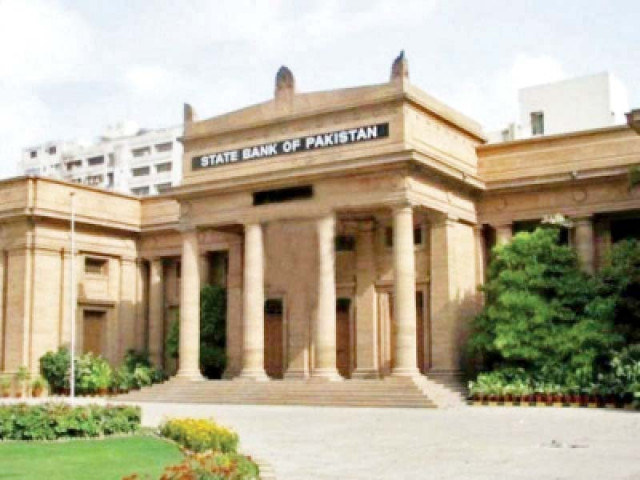SBP hikes key policy rate at two-decade high of 16%
Move aimed at curbing inflation, achieving ‘higher growth on more sustainable basis'

Against strong market expectations for maintaining the status quo, Pakistan’s central bank on Friday surprisingly hiked its key policy rate by 100 basis points to over a two-decade high at 16% to curb the elevated inflation reading and achieve a "higher growth on a more sustainable basis”.
The State Bank of Pakistan (SBP) has revised up its projection for average inflation reading to 21-23% for the current fiscal year 2023 compared with the earlier 18-20%.
"This [rate hike] decision is aimed at ensuring that elevated inflation does not become entrenched and that risks to financial stability are contained, thus paving the way for higher growth on a more sustainable basis,” the SBP announced in a statement issued after the end of its monetary policy meeting.
2/3 This decision is aimed at ensuring that elevated inflation does not become entrenched & that risks to financial stability are contained, thus paving the way for higher growth on a more sustainable basis. Higher food & core inflation are key contributors to elevated inflation.
— SBP (@StateBank_Pak) November 25, 2022
“Higher food and core inflation are key contributors to elevated inflation," it added.
The central bank further said after incorporating the Post-Disaster Needs Assessment of the floods and latest developments, the FY23 projections for a growth of around 2% and current account deficit of around 3% (or $10 billion) of the GDP shared in the last monetary policy statement were reaffirmed.
To recall, the inflation reading hit a 47-year high at 27.3% in August 2022 and remained lower than this in the next two months.
A local brokerage house estimated inflation at around 24% for the current month of November 2022.
Adding to the SBP’s concerns over the spike in inflation, Topline Securities CEO Mohammad Sohail said in a short commentary that International Monetary Fund (IMF) talks for the next tranche were underway and delayed that might have also compelled the monetary policy committee (MPC) to take the step of jacking up the rate to 16% to deal with the situation.
Last time, the central bank had set the interest rate at 16% was in July 1998 and maintained it there till February 1999.
Earlier, the bank had cumulatively hiked the rate by 800 basis points in an 11-month period (September 2021 to July 2022) to 15%.
Inflation may remain on the higher side ahead of the likely rise in food prices and upward revision in the energy price by the government under the IMF’s conditions for its ongoing $6.5 billion loan programme.
Since the last meeting, the MPC noted three key domestic developments.
Read Markets anxious as SBP mulls policy
First, the headline inflation increased sharply in October, as the previous month’s administrative cut in electricity prices was unwound.
Food prices have also accelerated significantly because of the crop damage from the recent floods, and core inflation has risen further.
Secondly, a sharp decline in imports led to a significant moderation in the current account deficit in both September and October. Despite this moderation and fresh funding from the Asian Development Bank, the external account challenges persist.
Thirdly, after incorporating the Post-Disaster Needs Assessment of the floods and latest developments, the FY23 projections for growth of around 2% and a current account deficit of around 3% of the GDP shared in the last monetary policy statement are reaffirmed.
However, higher food prices and core inflation are now expected to push the average FY23 inflation up to 21-23%.
Financial experts, institutions and the large-scale manufacturing (LSM) sector had strongly expected a status quo in the rate at 15% in the latest monetary policy meeting, as they thought a further hike would dampen economic activities and render more people jobless.
However, inflation emerged as a bigger concern for the central bank under the prevailing economic situation.
"While inflation is likely to be more persistent than previously anticipated, it is still expected to fall toward the upper range of the 5-7% medium-term target by the end of FY24, supported by prudent macroeconomic policies, orderly rupee movement, normalising global commodity prices and beneficial base effects," the central bank said.
"The MPC will continue to carefully monitor developments affecting medium-term prospects for inflation, financial stability, and growth,” it added.
Economic activities have continued to moderate since the last MPC meeting on account of transient disruptions from floods and the ongoing policy and administrative measures.
In October, most demand indicators showed double-digit contraction on a yearly basis -- including sales of cement, petroleum products, and automobiles.
On the supply side, electricity generation declined for the fifth consecutive month, falling by 5.2% on a year-on-year basis.
In the first quarter of FY23, the LSM production was flat compared with the last year, with only export-oriented sectors contributing positively.
In the agricultural sector, latest estimates suggest a sizeable output losses to rice and cotton crops from the floods which, together with the tepid growth in manufacturing and construction, will weigh on growth this year.
In line with the slowdown in economic activities, private sector credit continued to moderate, increasing only by Rs86.2 billion during the first quarter compared with Rs226.4 billion during the same period last year.
This deceleration was mainly because of a significant decline in working capital loans to wholesale and retail trade services as well as to the textile sector.
The development came in the wake of lower domestic cotton output and a slowdown in consumer finance.



















COMMENTS
Comments are moderated and generally will be posted if they are on-topic and not abusive.
For more information, please see our Comments FAQ